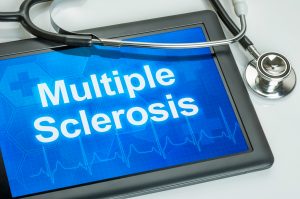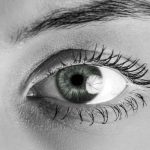 Multiple sclerosis and neuromyelitis optica (NMO) are often believed to be the same condition as they share many similarities. Both conditions are autoimmune. In multiple sclerosis, the immune system attacks the myelin, which is the protective coating around nerves. In NMO, the immune system attacks the optic nerve. An early sign of multiple sclerosis is vision loss and vision problems, so NMO may be an early warning sign of multiple sclerosis.
Multiple sclerosis and neuromyelitis optica (NMO) are often believed to be the same condition as they share many similarities. Both conditions are autoimmune. In multiple sclerosis, the immune system attacks the myelin, which is the protective coating around nerves. In NMO, the immune system attacks the optic nerve. An early sign of multiple sclerosis is vision loss and vision problems, so NMO may be an early warning sign of multiple sclerosis.
Although multiple sclerosis and NMO may share many commonalities, there are still distinct differences that tell each disease apart. Here we will outline those similarities and differences between multiple sclerosis and NMO to help you have a better understanding of each condition.
Is neuromyelitis a form of MS?
Advertisement
Neuromyelitis is often believed to be a form of multiple sclerosis due to its similarities to the latter. Yet, the Cleveland Clinic reports that NMO attacks to certain parts of the body are more detrimental, compared to multiple sclerosis. Furthermore, NMO does not respond to multiple sclerosis treatment, revealing that the two are quite different and do not have the same roots.
Another trait that sets neuromyelitis apart from MS, is that its symptoms appear suddenly whereas MS symptoms present themselves gradually. These symptoms, though, are quite similar, including changes to vision, muscle weakness, numbness, and the spinal cord inflammation.
But as mentioned, treatment methods for either disease are quite different, and this is why getting a proper diagnosis is so important – MS treatment won’t work for NMO, and vice versa. Further down, we will highlight the different diagnostic tests and treatment methods for these conditions.
Multiple sclerosis vs. NMO: U.S. prevalence
Anyone can develop multiple sclerosis, but it mostly affects 20- to 40-year-olds. Prevalence of multiple sclerosis in the U.S. is estimated at over 400,000 cases, and nearly 200 new cases are diagnosed each week. Rates of multiple sclerosis are highest in areas furthest away from the equator, so the rates are higher in the Northern U.S.
An estimated 4,000 people have NMO in the U.S. and is most commonly seen among those aged 40 to 50.
Both multiple sclerosis and NMO affect women more than men.
Comparing multiple sclerosis and NMO signs and symptoms
 When it comes to the signs and symptoms of multiple sclerosis and NMO, both diseases can appear quite similar.
When it comes to the signs and symptoms of multiple sclerosis and NMO, both diseases can appear quite similar.
Signs and symptoms of multiple sclerosis include numbness or weakness in one or more limbs, partial or complete vision loss, prolonged double vision, tingling or pain, electric-shock sensations, tremors and lack of coordination, fatigue, dizziness, slurred speech, and problems with bowel and bladder function.
Symptoms seen in NMO include limb weakness, numbness, partial paralysis, pain and tingling, loss of bladder or bowel function, nausea, and prolonged hiccup bouts.
Neuromyelitis optica vs. multiple sclerosis: Causes
Multiple sclerosis is an autoimmune disease in which the immune system attacks the myelin, causing damage and thus exposing nerve fibers. Like many autoimmune diseases, the exact cause is unknown, but environmental, immunologic, infectious, and genetic factors have all been found to play a role in the onset of multiple sclerosis.
The exact cause of neuromyelitis optica is unknown, but certain factors do play a role in the disease onset. Here are a few facts to know about NMO:
- NMO does not run in families.
- Tuberculosis and other environmental factors have been linked to the development of NMO.
- Those with Asian or African descent have higher rates of NMO.
- NMO is an autoimmune disorder.
- An antibody known as NMO IgG is found in over two-thirds of NMO patients.
NMO vs. multiple sclerosis: Risk factors and complications
 Risk factors for multiple sclerosis include being female, having a family history of multiple sclerosis, having certain infections, being white of European descent, living furthest from the equator, living in temperate climate regions, already having an autoimmune disease, and smoking.
Risk factors for multiple sclerosis include being female, having a family history of multiple sclerosis, having certain infections, being white of European descent, living furthest from the equator, living in temperate climate regions, already having an autoimmune disease, and smoking.
Complications resulting from multiple sclerosis include muscle stiffness and spasms, paralysis, problems with bladder, bowel and sexual function, forgetfulness and mood changes, depression, and epilepsy.
Risk factors for NMO include being female, being of Asian or African descent, having Ebstein Barr virus seropositivity, and having a negative history of smoking.
The main NMO complication is monocular blindness, which occurs in 60 percent of patients with relapsing episodes and 20 percent in patients with a monophasic course.
Difference between multiple sclerosis and NMO: Diagnosis and treatment
Multiple sclerosis is diagnosed through a series of tests, but diagnostics begins with a physical exam and an evaluation of symptoms to rule out other conditions. Some tests that your doctor may perform include blood tests to rule out other diseases, spinal tap to rule out infection and look for antibodies associated with multiple sclerosis, MRI of the brain to see lesions, and evoked potential test that records electrical signals as a response to stimuli to determine the function of the nervous system.
Treatment for multiple sclerosis is lifelong, and although it cannot cure the condition, it aims to minimize symptoms and allow the patients to live as normal of a life as possible. Some treatment methods include corticosteroids and plasma exchange, beta interferons, Glatiramer acetate, Dimethyl fumarate, Fingolimod, Teriflunomide, Natalizumab, Alemtuzumab, and Mitoxantrone, which all help to reduce the likelihood of relapses.
Other treatment methods include physical therapy to improve mobility, muscle relaxants, medications to reduce fatigue, and other medications like antidepressants, medications to control the bowels and bladder, and medications to improve sexual function.
Exercise, meditation, yoga, and acupuncture are also recommended as a means to reduce stress and improve overall mental and physical well-being.
To diagnose NMO, there must be the presence of the following: optic neuritis and acute myelitis, and at least two of the following characteristics: contiguous spinal cord lesion compromising at least three spinal cord segments, brain magnetic resonance not meeting MS criteria and, positive titers for anti-NMO-immunoglobulin.
The goal of testing for NMO helps detect oligoclonal bands in cerebrospinal fluid, which help distinguish NMO from multiple sclerosis, and find antibodies specific to NMO and not found in MS.
Advertisement
NMO treatment usually involves medications that help suppress the immune system to reduce the likelihood of flares. Other medications include steroids and chemotherapeutics.
It’s important to get a proper diagnosis to distinguish between multiple sclerosis and NMO, as multiple sclerosis drugs are not effective to treat NMO.
Neither MS nor NMO have a cure, so medications and other treatments help better manage symptoms.
